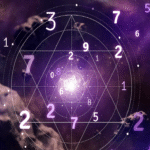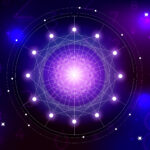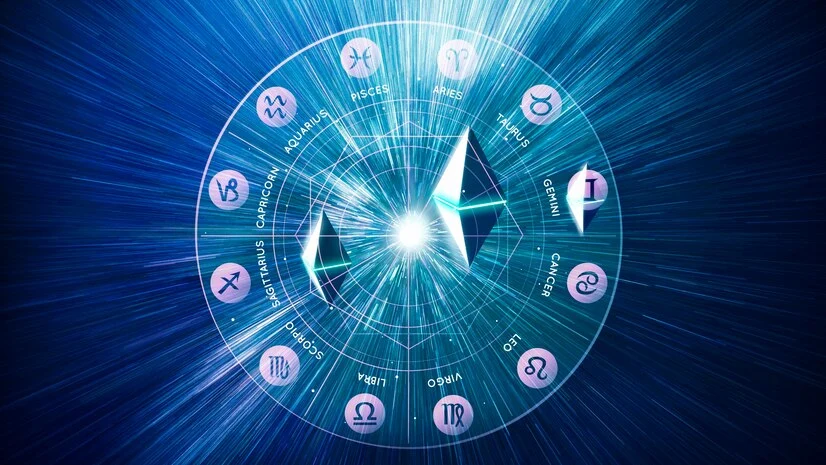Welcome to the Cosmic Map: Exploring the Mists
Embark on a journey of exploration as we consider Neptune from the perspective of Jyotish (Vedic Astrology). Like Uranus, Neptune, discovered in 1846, is not one of the nine traditional Grahas used in Jyotish. This guide will navigate the question of Neptune’s relevance, examining Neptune Sign Meaning (from Western astrology) and comparing its themes of Dreams, Illusion & Spirituality to the established principles and significators within the Vedic framework. Does Jyotish need Neptune to understand mysticism or confusion? Let’s explore.
First Stop: The Traditional Vedic Landscape (No Neptune Here)
(The Traditional Jyotishi’s View)
Our journey begins firmly grounded in the classical teachings of Jyotish, where the map of the cosmos features nine key influencers: the seven visible Grahas (Sun to Saturn) and the two shadow Grahas (Rahu and Ketu).
- Historical Context: The foundational texts of Jyotish were established millennia before Neptune’s discovery. The Rishis (seers) outlined a complete system based on these nine Grahas to understand karma, consciousness, and all aspects of earthly existence. There is no mention or mechanism for incorporating Neptune.
- Classical Techniques & Interpretations: Themes associated with Neptune in Western astrology – spirituality, illusion, confusion, escapism, compassion, psychic sensitivity, liquids, poisons, deception – are comprehensively addressed within Jyotish using the traditional Grahas and chart factors:
- Spirituality/Transcendence: Primarily signified by Ketu (Moksha Karaka – significator for liberation), Guru (Jupiter – wisdom, dharma), the 12th Bhava (loss of self, liberation), and specific Yogas indicating spiritual inclination.
- Illusion/Confusion/Deception: Strongly associated with Rahu (illusion, obsession, deception) and Ketu (confusion, detachment, lack of clarity), as well as an afflicted Chandra (Moon – mind) or Budha (Mercury – intellect).
- Compassion/Sensitivity: Seen through a strong Chandra, Guru, or influences on the 4th Bhava (emotions, heart).
- Liquids/Poisons/Drugs: Chandra (fluids), Shukra (pleasures, sometimes leading to addiction), Rahu (poisons, intoxicants), and the 8th/12th Bhavas play significant roles.
- Expert Insight (Traditional Source): “The nine Grahas, in their intricate dance through Rashis, Bhavas, and Nakshatras, reveal all karmic potentials, including tendencies towards spirituality, illusion, or escapism. The system is complete.” – Principle reflecting classical Jyotish view.
- Critical Considerations: From this perspective, attempting to add Neptune is unnecessary and dilutes the profound wisdom already available through understanding Rahu, Ketu, Chandra, Guru, and the relevant Bhavas (especially the 12th).

Crossing the Bridge: Comparing Concepts (Hypothetical)
As we proceed, we cross a theoretical bridge. Here, we acknowledge Neptune’s non-traditional status but engage in a comparative exercise. How do the themes associated with Neptune in Western thought potentially resonate or contrast with existing Jyotish concepts, purely for intellectual exploration?
Second Stop: Contemporary Exploration & Correlation
(The Modern Jyotishi’s (Exploratory) Approach)
Entering this landscape means acknowledging we are outside standard Jyotish practice, exploring potential symbolic correlations noted by some modern, comparative astrologers.
- Contemporary Observations: Some who study both systems might observe parallels. For instance, periods of heightened global interest in spirituality or mysticism, or conversely, mass delusion or escapism (e.g., through media, drugs), might be theoretically correlated with Neptune’s position or transits by those looking for such links. Themes of Astrology Spirituality Style are explored.
- Psychological Insights (Comparative Lens): Neptune’s Western association with the collective unconscious, divine discontent, idealism, and blurred boundaries could be compared to Jyotish concepts. Ketu represents detachment, dissolution of ego, and connection to past lives/collective karma, sometimes leading to confusion or spiritual seeking. Rahu represents insatiable desire and illusion (Maya). An afflicted Chandra or Budha can indicate susceptibility to fantasy or delusion. Guru governs higher faith and divine connection. The 12th house relates strongly to subconscious, dreams, and letting go.
- Evolving Interpretations (Outside Tradition): A few contemporary practitioners might experimentally note Neptune’s position in a chart as an additional layer for collective or generational themes, but without assigning it specific Jyotish dignities, Drishti (aspects), or using it for core prediction or remedy. It remains an external reference point. Where one might Seek Transcendence Astrology themes is primarily seen via Ketu, Guru, and the 12th house.
- Technique Deep Dive (Comparative): Comparing Neptune’s transit effects (in Western astrology) with concurrent Dasha periods and transits of Rahu/Ketu/Guru/Chandra in Jyotish for similar themes (e.g., confusion, spiritual insight) can be a comparative research exercise for those interested in both systems.
- Expert Insight (Modern Jyotishi – with caveat): “While Neptune isn’t part of Jyotish, studying its Western meanings can sometimes prompt us to look deeper at how Ketu, Rahu, the Moon, or the 12th house are functioning in a chart when themes of illusion, spirituality, or escapism are prominent. It’s a comparative prompt, not a replacement.” – Contemporary Jyotish practitioner emphasizing comparative context.

Third Stop: The Student’s Clarity Checkpoint
(The Student’s Journey)
For students of Jyotish, maintaining clarity between systems is paramount when encountering Neptune.
- Learning Process: The core task is mastering the significations of the nine Grahas and how they cover themes Western astrology might assign to Neptune. Understanding Ketu as Moksha Karaka and significator of detachment/confusion, Rahu as Maya/illusion, Chandra as mind/perception, Guru as wisdom/faith, and the 12th house as transcendence/loss is key.
- Common Questions: “My Western chart has strong Neptune. Does that mean anything in Jyotish?” Answer: Not directly. A Jyotishi would analyze your Ketu, Rahu, Chandra, Guru, 12th house, and relevant Yogas and Dashas to understand themes of spirituality, sensitivity, illusion, or confusion in your life according to Vedic principles. The Neptune placement itself isn’t used in traditional interpretation.
- Breakthrough Moments: Understanding the profound depth and subtlety of Ketu’s significations – its ability to represent both spiritual liberation and confusion/loss – is often a major breakthrough, revealing why Neptune isn’t needed. Grasping the power of the Dasha system to time periods of spiritual seeking or confusion is another.
- Expert Insight (Jyotish Student): “I was initially drawn to Neptune’s mystical themes, but then I learned about Ketu and the 12th house in Jyotish, and realized there’s already such a deep, karmically-rooted way to understand spirituality and illusion here. It felt more grounded.”
- Misconceptions vs. Reality: Misconception: Jyotish is ‘missing’ Neptune and therefore incomplete. Reality: Jyotish is considered a complete system by its traditional practitioners, with its existing Grahas and techniques fully addressing the spectrum of human experience, including mysticism and illusion. Misconception: Neptune and Ketu are the same. Reality: While they touch on similar themes (spirituality, dissolution), their core nature, calculation, and interpretive framework within their respective systems are very different. Ketu is intrinsically tied to past karma and the soul’s journey towards liberation in Jyotish.

Fourth Stop: The Realm of Practical Application (Jyotish Focus)
(The Practical Application Expert’s Guidance)
Practical Jyotish consultations rely entirely on the nine Grahas and established techniques to address themes associated with Neptune.
- Real-World Usage: When clients present issues related to confusion, deception, addiction, spiritual seeking, or high sensitivity, a Jyotishi analyzes Rahu, Ketu, Chandra, Budha, Guru, the 12th house, relevant Vargas (divisional charts), and the active Dasha period. Guidance and Upayas (remedies) are based on strengthening or pacifying these traditional factors.
- Client Experiences: Clients seeking spiritual understanding find deep insights through analysis of Ketu (Moksha Karaka) and Guru. Those struggling with confusion or deception find clarity by understanding Rahu/Ketu dynamics or afflictions to their Moon/Mercury. Guidance is actionable within the Jyotish framework.
- Practical Tips:
- To understand your Astrology Spirituality Style (Vedic), examine Ketu, Guru, your 9th house (dharma, higher wisdom), and 12th house (liberation, subconscious).
- If struggling with illusion or confusion, analyze Rahu and Ketu placements, afflictions to Chandra (mind) or Budha (intellect), and the current Dasha period.
- For escapist tendencies or addiction issues, examine the 12th house, Rahu, Chandra, and Shukra (pleasure).
- Appropriate Upayas might involve strengthening Guru or Chandra, propitiating Rahu or Ketu through mantras or charity, or specific practices related to the 12th house lord.
- Technique Deep Dive: Analyzing the 12th Bhava: This house is key for themes Western astrology links to Neptune. Planets in the 12th, the condition of the 12th lord, and planets aspecting it reveal tendencies towards spirituality, isolation, escapism, charity, sleep patterns, and connection to subconscious or past life influences (related to Ketu).
- Expert Insight (Jyotish Consultant): “Whether a client seeks spiritual growth or struggles with confusion, Jyotish offers precise tools through Ketu, Rahu, Guru, Chandra, and the Bhavas, especially the 12th. We can identify the root causes within their karmic blueprint and offer appropriate Vedic guidance and remedies.”

Journey’s End: Your Personal Practice Path (Staying with Jyotish)
Our comparative journey concludes back on the firm ground of traditional Jyotish. While Neptune governs fascinating archetypes in Western astrology, Jyotish possesses its own profound and complete methods for understanding spirituality, illusion, compassion, and transcendence through the nine Grahas (especially Ketu, Rahu, Guru, Chandra) and the twelve Bhavas (especially the 12th). Integrating the perspectives means respecting the boundaries and depth of the Vedic system (Traditional & Practical), understanding why Neptune isn’t needed (Student), while acknowledging the possibility of symbolic resonance for those engaged in comparative study (Contemporary Exploration). For navigating your life using Jyotish, focus on mastering its rich, inherent tools.
Map for Further Exploration (Further Learning)
- Rahu and Ketu (The Nodes) Explained in Jyotish (Essential for these themes)
- Guru (Jupiter) in Jyotish (Wisdom, faith, spirituality)
- Chandra (Moon) in Jyotish (Mind, perception, sensitivity)
- The Significance of Bhavas (Houses) in Jyotish (esp. 12th, 9th, 8th)
- Introduction to Grahas (The 9 Planets) in Vedic Astrology









